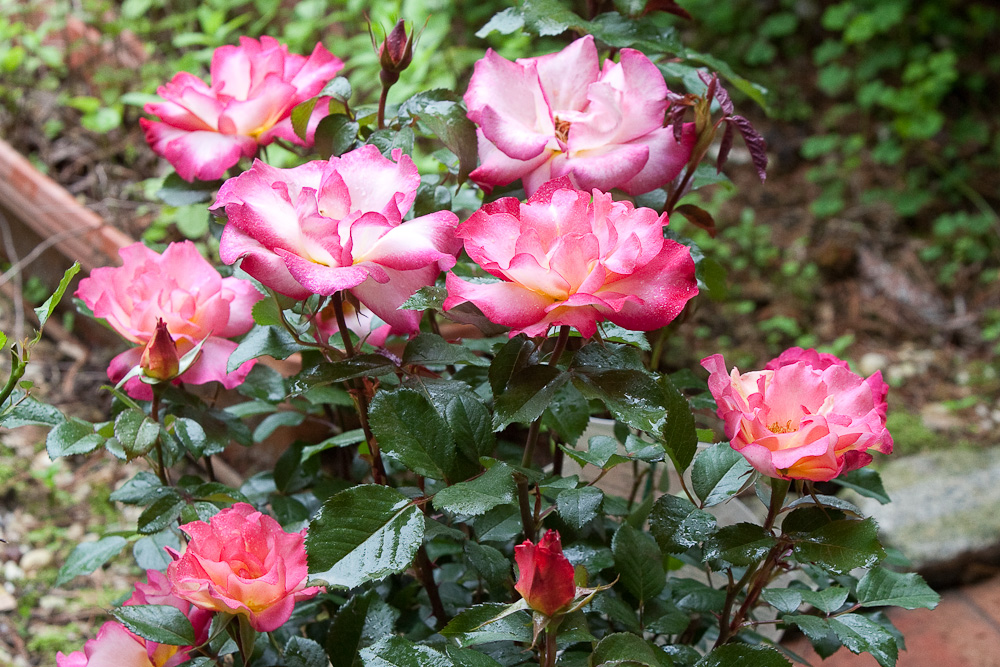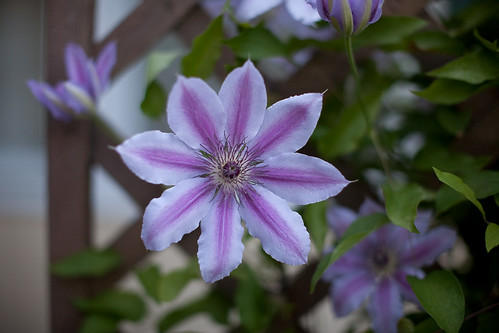This is a a brief (and pointless) review of the Sears Craftsman Rear Engine Riding Mower
Model 7800669 Item # 07128034000 (12.5HP Briggs & Stratton Engine with 28" Mower Deck):
It seems I might have bought the only instance sold. This small riding mower was introduced just this February or so, appeared in the stores in late March or April, and now I can no longer find it on the Sears web site.
Here are a couple of snapshots of the machine.


A reviewer must have some experience; my only previous mowing experience was with a Murray Select 30577x8A which gave good service for ten years. Here is a picture of the Murray. I don't think Murray sells lawn mowers any more - at least I couldn't find any.

Comparison of specifications:
The Craftsman and the Murray both use Briggs&Stratton engines with roughly the same power. The Murray had a 30 inch deck (i.e., it cuts 30" width of grass each pass), and the Craftsman has a 28" deck. I think the Craftsman machine is lighter - as you can see from the picture there is no superfluous metal on the Craftsman. In the rear of the Craftsman, you can see two bars - the machine can be tipped over to stand on those - though I haven't tried that yet. That will in principle make it possible for me to remove the cutting blade, something I never did by myself on the Murray.
You can also see that the Craftsman seat is higher off the ground, which makes it (by physics) less stable, but in practice makes little difference.
The slowest forward speed of the Craftsman is faster than the slowest speed of the Murray which makes for a problem in heavy grass (e.g., if I didn't mow the lawn for a while). Having to cut through a lot of grass at a higher rate causes the Craftsman to stall - something the Murray seldom did.
Turning radius is about the same.
The Craftsman has some kind of suspension holding the seat so that the ride over bumps is smoother. It may be the newness of the machine, but the gear shift is much stiffer and it is currently harder to change gears than the Murray ever was.
Sears/Craftsman is very concerned about safety, according to the manual. One safety feature is that there is a blade clutch; the blade instantly disengages if your foot leaves the blade clutch. So e.g., if you and the tractor fall into a ditch, the rotating blade should not be a hazard. However, it takes some getting used to.
Another safety feature comes from the fact that (if I remember correctly, I'm not going to search for it) that most mowing accidents occur with 65+ year-olds mowing in reverse gear. So, unless you follow a careful sequence, you cannot mow in reverse. What this means in practice is that if you've mowed to a tight spot and have to reverse because there is no room to turn, it means you have to disengage the blade, back out, and then reengage the blade. This is a bit of a pain. Maybe I'll appreciate it more when I'm 65+.
But overall the Craftsman does the job and is about as good or bad as the Murray was. (It is apparently a bit louder, I'm told.) It is about the only mower I could find in the stores hereabouts of this size and weight.
Why did I buy the Craftsman?
The Murray was just beginning to fall apart. Maybe I could have found spare parts and mended it. Maybe.
Home Depot, Lowes & Sears all sell riding mowers that are cheaper than the Craftsman, but they're all much larger. The smallest one bigger than this was about $400 cheaper, but weighed in at 400+ pounds. Suppose I had to push one of these when they (inevitably) breakdown - the Murray I've pushed up the slope in my backyard all by my lonesome. )The Craftsman is 314 pounds as per the manual.)
This is a new (and seemingly now discontinued) product, and I was hesitant to be the guinea pig. But it was the only small mower I could find. I don't understand the American obsession with (large) size. Nobody's yard in my neighborhood has expanded recently. Yet the tractors I see keep getting larger and larger. The Craftsman is actually elegant in that regard.
The annoying part of the purchase was that I needed to purchase an additional attachment to make it a mulching mower (it seems at least from the selection of tractors on display that mulching is out of fashion, you have to buy something additional. Ten years ago when I bought the Murray, everything mulched)—and I couldn't order it in the store, that would double the delivery fee. It was better to order it online from home, where a single delivery charge covered both the mower and the mulching part. As it turned out, Sears delivered the mower with the mulcher installed.
Apart from the price, I'd recommend this machine to anyone who needed something for a yard of my size - but if you can no longer buy it, what's the point? And why needlessly attract the evil eye? Finding spare parts for the machine might be a problem - though Briggs&Stratton is pretty much a standard.
When I started out, I thought I'd be writing a lament about the decline of American engineering. But now I appreciate the machine more. If Sears is/was unable to sell these machines, it is their own missteps that are to blame. I hope this iconic American company gets its act together again and is around and has what I need when I next need a mower.
____
PS: I passed by the Sears store. This machine is not represented there.
PPS: The gas tank has a vent, that has to be open a little or else the machine stalls (by design it seems). Another safety feature I guess.
PPPS: December 19, 2010 : saw the model at Sears for $1700+!
PPPPS: May 10, 2012: so far, happy with the machine that I have.















